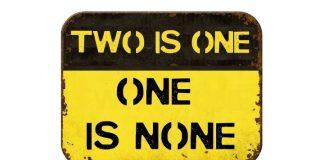Buying a new car can put you one step closer to living in a van down by the river.
New cars cost about $25,000 on average for the typical family sedan – which is about 30 percent more, adjusted for inflation, than a family sedan cost in the 1970s.
But it’s not just the up-front price that gets you. In addition to making the monthly payment for the car itself, there are at least three other things you’ll probably be paying for, too. People sometimes forget to factor them into their buying decision – which can put them once step closer to that van by the river… .
* Taxes –
There are sales and personal property taxes on motor vehicles in many states. The higher the vehicle’s retail value, the higher the tax.
For instance, a 2 percent tax on the sale of a $22,000 car is $440. On a $28,000 car it is $560.
But at least the sales tax is a one-time hit.
In many states, there are also annual personal property taxes on vehicles. You pay every year, for as long as you own the vehicle. This can amount to a lot of money.
For example, I own a 13-year-old Nissan pick-up that’s maybe worth $4,000 or so. This year, the state of Virginia demanded another $100 from me. Over the past 6-7 years, I’ve paid close to $1,000 in property taxes on this truck – which I bought used for less than $8,000. In other words, I’ve paid taxes that amount to almost 13 percent of the purchase price – just for the privilege of owning this old truck.
The personal property tax on a new vehicle with a retail value of $30,000 might be that much each year – for years to come.
Over the course of a seven or eight years, a person could end up paying an additional several thousand dollars in personal property taxes – amounting to an extra 10-20 percent in fixed purchase costs above and beyond what you actually paid for the car itself.
Don’t forget to keep this in mind if you live in a state that has a personal property tax on motor vehicles.
* Insurance –
This is another big cost that many people forget to take into consideration before they go new car shopping. The cost to insure a new vehicle, even if you have a perfect driving record and are in a low-risk group (over 35 and married) the annual premium for a comprehensive policy on a new or near-new vehicle in urban/suburban areas is often more than $1,000 annually. If you’re in a high-risk group (under 30 and single) or have a few tickets to your credit, it might be twice that or more.
Insurance costs are higher than they have ever been for two reasons, chiefly.
One, modern cars are much more expensive to repair – especially after minor fender-bender accidents – than the cars of the past were. For example, a new car’s multi-faceted headlight “assembly” can cost several hundred bucks vs. $25 or so for an old-style sealed beam headlamp. Rubber/plastic bumper covers are easily torn and hard to fix; usually, they’re just replaced – at huge cost to you. If the airbags go off, the steering wheel and dashboard have to be replaced. That alone can cost $2,000 before even getting into any bodywork.
Two, we’re forced to buy insurance. We can’t just say, “No thanks – you charge too much. I’ll take my chances and just pay for whatever happens if something does happen out of my own pocket.” Since we can’t say no, we have to say yes – which means the insurance cartels can all charge everyone a high price since they’ve got us all cornered. If we want to drive (legally) we have to pay.
Bottom line, insurance costs can be a killer, especially if you’re driving an expensive or “high risk” vehicle, such as a high-performance sports car. What will you do if your premium doubles after you get a big speeding ticket? Can you afford it?
* Maintenance and Upkeep –
Here’s a third factor that is becoming one of the major unexpected costs of owning a new (or late-model) vehicle. The complexity of modern cars has increased exponentially in recent years as even mass-market models now typically come equipped with power everything, as well as elaborate electronic equipment such as climate control air conditioning and GPS. Even basic service is getting beyond the capabilities of the weekend do-it-yourselfer. For other than basic stuff like oil and filter changes, most of us will end up facing paying a dealership service technician $70 per hour.
It’s true that cars were more maintenance-intensive in the past (annual tune-ups, for instance) but the cost was relatively low and a DIY type could often handle the job himself. Today, “routine maintenance” sometimes means $800 to change a timing belt at 60,000 miles and a major “tuneup” can cost $400 or more. Seventeen and 18-inch wheels are common – and each tire often costs $200 or more vs. maybe $75 back in the days when most cars came with 15 inch steel wheels and whitewall radials.
This is why it’s savvy to shop makes/models with very generous warranties – and be prepared ditch the thing within a year or two after the warranty ends, unless you have a large slush fund to deal with the possibility of an expensive major repair. 










These numbers don’t mean much without having been adjusted for inflation.
The average new car costs about 20-30 percent more than the average new car of the past, even adjusted for inflation. First, most of them just cost more – in part because modern cars are required to have expense-adding equipment such as multiple air bags and also because most cars now come with features that used to be considered luxury equipment (such as AC and power windows) as well as stuff that wasn’t even available, like GPS/entertainment units. But the other factors that drive up the total cost of owning a modern new car are the “peripherals” mentioned in the article, such as taxes and insurance and maintenance – which are generally higher than they were in the past. The upside is that modern cars usually require less regular maintenance (such as annual tune-ups) and will usually run for 150,000-plus miles without much more than oil and filter changes, if you don’t beat on them. But when things do start to go wrong, it can get expensive fast. Meanwhile, with the older stuff (for example, my ’76 Pontiac) you can rebuild the entire drivetrain for $2,000 and be good to go for another 100k.
In my area (DC suburbs) shop labor rates are $85, to $125 an hour.
Then there is the issue of increasingly vehicle specific lubricants and other fluids. Hoping to save money with a “Quick lube” sort of service can end up costing thousands down the road. VW/Audis have sludgeing issues, and the direct injection engines will wear out cams, and high pressure pumps in short order with the use of cheaper lubricants. It all adds up, and quickly too. I am a shop owner, and I cheerfully drive old cars. No muss, no fuss, no bother.
We’re on the same page! I drive new cars every week. But my newest vehicle is a nine-year-old Nissan Frontier (four cylinder, 2WD, manual trans – about as simple as a modern vehicle can be). I paid $7,200 for it, used. It has already paid for itself and I could sell it at a profit if I wanted to. I think it’ crazy to tie up $30,000 (or $50,000) in a depreciating asset, in an appliance. I love cars, but I like being debt-free even more. And because I’m debt-free I’ve been able to indulge a little and own an old muscle car and four motorcycles (two of them antiques from the ’70s and early ’80s).
I think part of the reason Americans are in so much trouble financially is they have so much tied up in things like cars and houses.
You are exactly correct sir. If I was going to pay out 30K for a car, it would at least be an interesting car.Driver condition E type coupe, driver GTO… Several really nice MGBs So many choices, all more interesting to drive and own than say, an Altima, or an A4 (no offense to owners of those cars intended, just different strokes and all that.) I have an 87 Audi 5000 Quattro wagon, that I bought from the original owner for 800 bucks, and a 94 XJ6 that I picked up for 1000 with 70K verified miles on it. The lady that owned it was too cheap to fix the AC . I also have a “vair in mid restoration, and a 84 Chrysler wagon in the queue. The Audi is great 26.5 MPG in daily commuting, and well over 30 on distance highway cruises. Historic tags in Md, so no state functionaries ever get to touch it. Nothing like a wagon to fly under the radar…
Jesse, sounds like you have an amazing inventory for the price. My daily driver (got it 10 years ago) is a ’94 Saturn SCII I got for $700 with a brand new engine after Walmart blew up the first one on my friend and then she crashed and destroyed the hood and headlight. My ’82 El Camino I got for $600 15 years ago. I paid out the azz for my ’02 4Runner, 13k. My ’96 FLT Harley was 7k 3 years ago. Wife ’96 Sportster was 3k. My entire inventory, including my off road vehicles is less than 25k. It’s amazing to me that people buy NEW cars! I would fess up some real money for an older sports car though, like an old (1980s) 911!
Same philosophy here! My inventory is as follows:
’98 Nissan Frontier XE 4WD; paid $7,700 for it eight years ago. Book says it’s still worth around $4,000 right now. (These little trucks hold their value).
’02 Frontier XE 2WD; paid $7,200 for it two years ago (this one only has 63k on it, so it’s probably got an easy 100k of life left; looks great, etc.)
1976 Trans Am; Carousel Red, 455, Honeycombs, 58k original miles, excellent condition. Paid $5,400 for it 20 years ago.(Same condition car today would be closer to $15k-$20k).
2003 Kawasaki ZRX; bought new for $7,770 – my only new vehicle purchase, ever! Still looks brand-new.
’76 Kawasaki Kz900; bought for $1,500 and restored it.
’83 Honda GL650; just bought it for $1,500. Bike is cherry; only 13k miles on it.
2001 KL250; bought it for $2,000 in 2005; thinking about selling it – expect to get at least $1,500 for it.
So, total in all these – two trucks, one classic muscle car and four bikes – is about $30,000. The TA is probably worth close to $20k all by itself, so I’m really only in the hole for about $10k for all the other stuff!